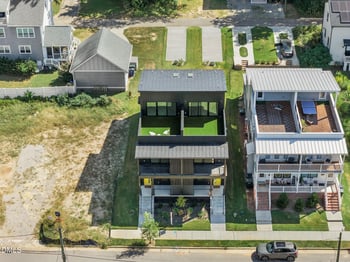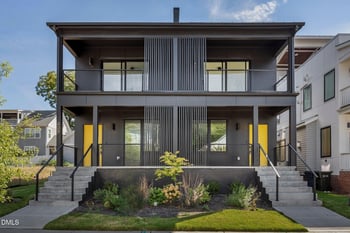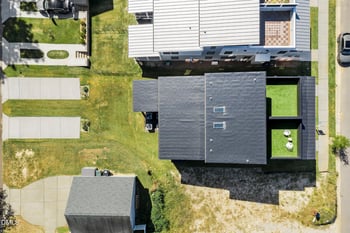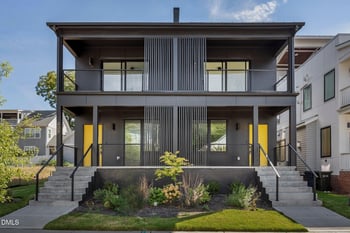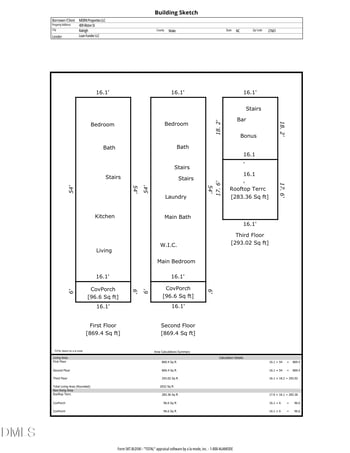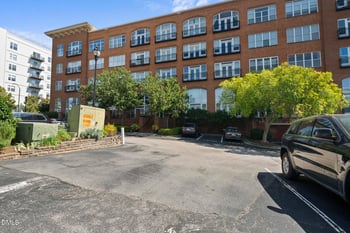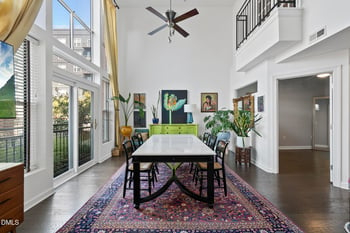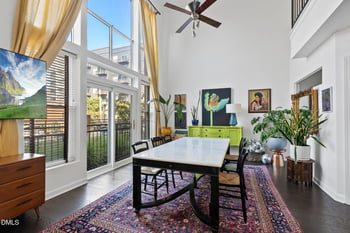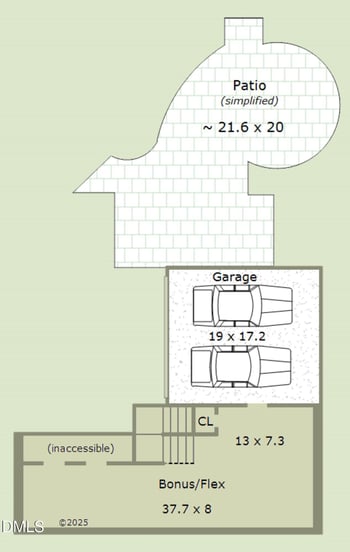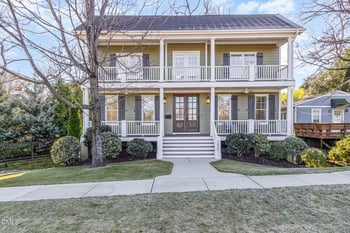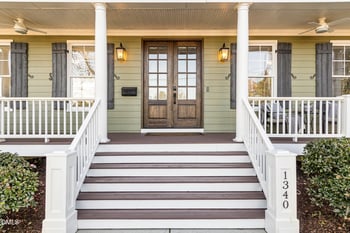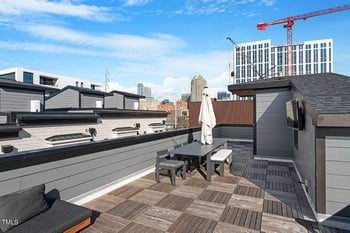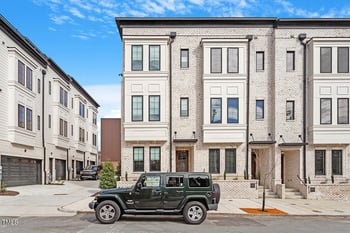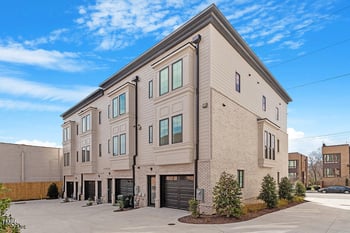Downtown Raleigh Homes for Sale & Real Estate
Downtown Raleigh Homes for Sale & Real Estate
Welcome to our Downtown Raleigh real estate showcase — your gateway to some of the most dynamic, walkable, and architecturally compelling neighborhoods in the Triangle. Whether you're a first-time buyer, an urban investor, or someone seeking the balance of convenience and character, the downtown Raleigh market offers a distinctive blend of residential options, city access, and community energy.
Why Downtown Raleigh?
Downtown Raleigh is the heart of the city — the place where commerce, culture, dining, nightlife, and civic life converge. Living downtown means having parks, performance venues, museums, food halls, and offices all within walking distance or a short transit ride. For many buyers, this reduces dependence on cars and enhances everyday quality of life.
But beyond the lifestyle appeal, downtown Raleigh also offers genuine real estate value. With a relatively constrained supply of residential land and growing demand, properties here often hold up well in value and attract both end users and investors.
What Types of Homes You’ll Find
The multifaceted nature of downtown living is reflected in the diversity of housing options. Here’s a look at the kinds of properties currently—or typically—available:
-
Condominiums / City Flats
Many of the newest or mid-rise buildings offer sleek condo units with modern finishes, shared amenities (gym, rooftop decks, concierge, security), and views over the city skyline. These are popular among professionals, empty nesters, and those wanting maintenance-free living. -
Lofts & Adaptive Reuse Units
Former warehouses, factories, and historic commercial buildings have been converted into loft-style residences, often preserving exposed brick, high ceilings, large windows, and open floor plans. These have a strong appeal for design-forward buyers. -
Townhomes / Row Homes
In pockets of downtown and its edges, you’ll find elegant townhomes or row houses that offer multiple levels, private garages, and small yards or terraces. These strike a balance between condo living and a standalone home experience. -
Single-Family / Infill Homes
Though limited, there are traditional houses or infill homes in core neighborhoods close to downtown. These may require renovation or updating, but they can be great opportunities for buyers wanting more land, character, or flexibility. -
Luxury / Signature Residences
At the top end of the market, some condo developments and penthouses offer high-end finishes, expansive balconies, panoramic views, and additional premium services (valet, private amenities, etc.)
Current Listings Snapshot (as of latest update)
On the RaleighRealty downtown Raleigh page, about 224 properties are currently listed in the downtown category. raleighrealty.com A few recent examples:
-
915 Bloodworth St — 3 beds, 2 baths, ~1,304 sq ft, listed around $769,000 raleighrealty.com
-
805 Tower St #101 — 4 beds, 4 baths, ~3,005 sq ft, listed ~$1,099,000 raleighrealty.com
-
301 Fayetteville St #3110 — 2 beds, 2 baths, ~1,248 sq ft, ~$550,000 raleighrealty.com
These are just snapshots — the range spans modest to premium, and the list is updated frequently.
Price Trends & What to Expect
Downtown Raleigh’s real estate tends to command a premium compared to suburban areas, reflecting the value of location, walkability, and amenities. Buyers can generally expect:
-
Higher per-square-foot pricing, especially in newer buildings or with enhanced amenities.
-
Smaller lot sizes or footprint for single-family homes (when they exist), since land is limited. Many homes will be vertical (townhomes) or multi-story.
-
Possibility of renovation or retrofits, since older homes may not have all modern conveniences; many buyers in downtown markets budget for interior upgrades.
-
Competitive offers, especially on well-priced properties or desirable units (views, location, finishes). Speed and preparation matter.
Benefits of Buying Downtown
-
Lifestyle & Walkability
You can walk or bike to many destinations — restaurants, theaters, shops, public transit, museums, parks. This lessens the need for daily driving. -
Transit & Connectivity
Downtown is often well serviced by transit (buses, future light rail or microtransit), and commuting to nearby job centers is often easier. -
Cultural & Social Amenities
From festivals and events to nightlife and arts, downtown living gives you access to the city’s pulse. You’ll be closer to performance halls, galleries, city squares, and public events. -
Resale & Investment Value
Because of the limited supply of land and continued demand for urban living, downtown properties often maintain or appreciate value. Even if you move out later, you may find robust interest from buyers or renters. -
Low Maintenance Living
Condos, lofts, and newer developments often delegate exterior and common area maintenance to a homeowners’ association (HOA). That can reduce burden but requires careful HOA due diligence.
What Buyers Should Consider
-
HOA Fees & Rules
Many downtown properties have HOAs that control common areas, maintenance, and shared amenities. Understand what’s included (ex: water, waste, insurance, security) and whether there are limits on rentals or modifications. -
Parking & Storage
Parking can be limited or expensive. Some units come with deeded or reserved parking; others may rely on shared garages or off-site parking. Storage space inside the unit or building should be assessed carefully. -
Noise, Views & Orientation
In dense urban settings, noise from traffic, nightlife, and building systems can factor in. Ask about window insulation, orientation (front vs. back), and the view corridor. -
Future Development & Zoning
A neighboring parcel may be slated for new construction, changing your outlook, light, or privacy. Be sure to check proposed developments or zoning plans in adjacent areas. -
Resale & Liquidity
While downtown properties are often desirable, the higher price and niche nature sometimes mean a smaller buyer pool. Pricing and presentation have to appeal broadly.
How RaleighRealty Helps
-
Newest Listings First
The site sorts by “newest first” by default, so you’ll catch fresh inventory quickly. raleighrealty.com -
Filtering Tools
Buyers can filter by price range, number of bedrooms and bathrooms, and additional criteria (amenities, lot size, etc.) raleighrealty.com -
Map View & Neighborhood Context
Using the site’s map or “Show Map” feature helps buyers see spatial relationships — how close a listing is to transit, parks, landmarks, or infrastructure. raleighrealty.com -
Market Stats & Analytics
The page includes a “Market Stats” section (often below or adjacent to listing displays) to help buyers understand price per square foot, trends, supply levels, and more. raleighrealty.com -
Comparative Market Analysis (CMA) / Home Valuation Tool
RaleighRealty offers a free CMA to users curious “What’s your home worth?” — helpful if a buyer is also selling or comparing across neighborhoods. raleighrealty.com -
Local Expert Agents
The site connects prospective buyers with local agents who specialize in downtown or urban Raleigh. These agents have on-the-ground knowledge of developments, zoning, and building history.
Neighborhoods & Subdistricts to Know
While “Downtown Raleigh” is a single category on the site, it encompasses or abuts several distinctive areas:
-
Warehouse District / Glenwood South
-
Fayetteville Street / City Center
-
North / South Dawson / Moore Square areas
-
Raleigh’s “core urban neighborhoods” just outside strict downtown boundaries (e.g. Boylan Heights, Glenwood, Mordecai)
Each carries its own character, walkability, and housing styles.
Tips for Buyers & Success Strategies
-
Get pre-approved early — in a competitive downtown market, sellers prefer buyers who are ready to move.
-
Be flexible on move-in / contingencies — some sellers may prefer quicker timelines or fewer contingencies.
-
Look beyond cosmetics — floorplan, structural soundness, layout, view, orientation matter more than paint.
-
Ask about condo / HOA reserves — healthy reserves prevent surprise assessments.
-
Tour at different times of day — see noise, light, and parking behavior at night and during peak hours.
-
Keep an eye on upcoming inventory — downtown developments or new towers may produce condo units before they even hit public MLS.
-
Engage a specialist downtown agent — many “urban quirks” (plumbing, shared walls, parking, traffic) require local knowledge.
Summary & Invitation
Downtown Raleigh presents a compelling urban lifestyle option that blends convenience, culture, and investment appeal. The RaleighRealty “Downtown Raleigh Homes for Sale & Real Estate” page curates dozens to hundreds of listing options (currently ~224) with powerful filtering, map tools, and local expertise backing it.
If you’re ready to explore downtown living, we’re here to help — whether it’s scheduling tours, pulling up off-market opportunities, running a comparative analysis, or guiding you through the finer points of urban condominium ownership. Let’s find your place in the heart of Raleigh.









